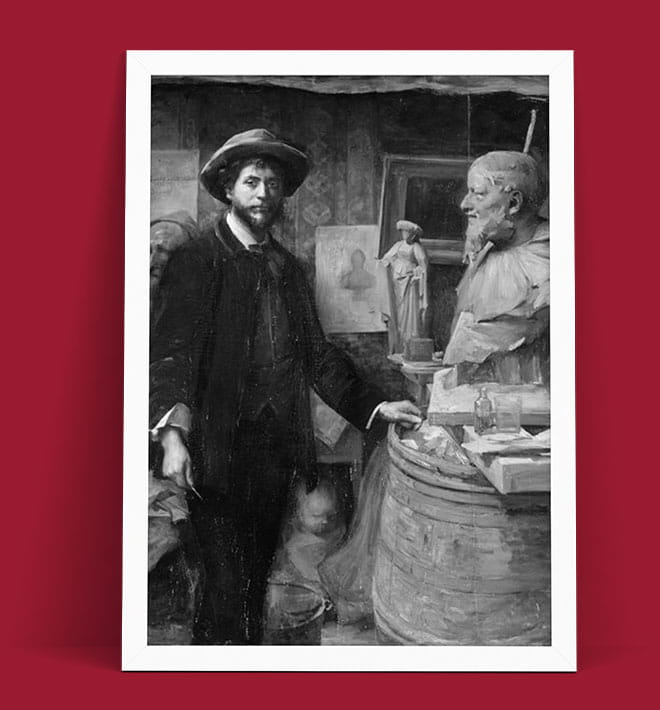Early Life and Education
Jean-Joseph Marie Carriès was born on February 15, 1855, in Lyon, France. Orphaned at the age of six, he was raised in a Roman Catholic orphanage. His early exposure to sculpture began with an apprenticeship under local sculptor Pierre Vermare. In 1874, Carriès moved to Paris to study at the École des Beaux-Arts under Augustin-Alexandre Dumont.
Sculptural Achievements
Carriès initially gained recognition for his sculpted busts and portraiture, often depicting intense psychological states. Notable works include Le Mendiant russe ("The Russian Beggar") and Le Guerrier ("The Warrior"). His expressive style diverged from academic conventions, embracing naturalism and emotional depth.
Influence of Japonisme and Transition to Ceramics
The 1878 Exposition Universelle in Paris introduced Carriès to Japanese art, profoundly impacting his artistic direction. Inspired by Japanese stoneware, he began experimenting with ceramics, focusing on stoneware with thick glazes and organic forms.
Establishment in Saint-Amand-en-Puisaye
In 1888, Carriès relocated to Saint-Amand-en-Puisaye, a region known for its stoneware production. There, he built a kiln and developed unique glazing techniques, often incorporating ash glazes and embracing imperfections, aligning with the aesthetics of wabi-sabi.
Notable Ceramic Works
Carriès' ceramic pieces are characterized by their expressive forms and innovative glazes. Some of his significant works include:
- Vase soliflore (c. 1889–94): A stoneware vase with dripping glazes, reflecting Japanese influence.
- Le Grenouillard ("The Frog Man") (c. 1891): A glazed stoneware sculpture depicting a hybrid creature, showcasing Carriès' fascination with grotesque forms.
- Cache-pot (c. 1891–92): A glazed stoneware vessel with gold highlights, exemplifying his mastery in ceramic art.
Legacy and Influence
Carriès passed away on July 1, 1894, in Paris at the age of 39. Despite his short life, his contributions significantly influenced the Art Nouveau movement and elevated ceramics to a respected art form in France. His works are housed in major institutions, including the Metropolitan Museum of Art and the Musée d'Orsay.
Selected Works
- Le Mendiant russe ("The Russian Beggar"), circa 1881
- Le Guerrier ("The Warrior"), before 1884
- Le Faune endormi ("The Sleeping Faun"), 1885
- Buste de Loyse Labé, circa 1887
- Masques accolés ("Joined Masks"), circa 1888–1894
- Jeune fille à la tête penchée ("Young Girl with Tilted Head"), 1888–1894
- Masque autoportrait ("Self-Portrait Mask"), 1890–1892
- Grenouille aux oreilles de lapin ("Frog with Rabbit Ears"), circa 1891
- La Religieuse souriante ("The Smiling Nun"), circa 1893–1894
- Vase, stoneware, date unspecified
Jean-Joseph Marie Carriès' innovative approach to sculpture and ceramics, blending Western and Eastern influences, solidified his place as a pivotal figure in the transition toward modernist aesthetics in the late 19th century.


